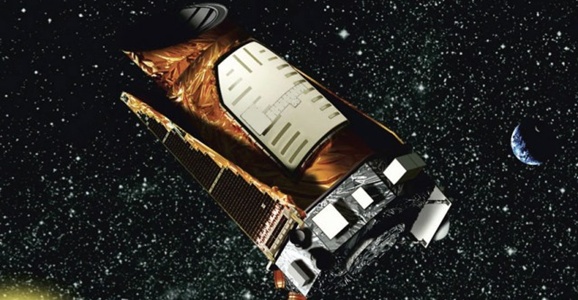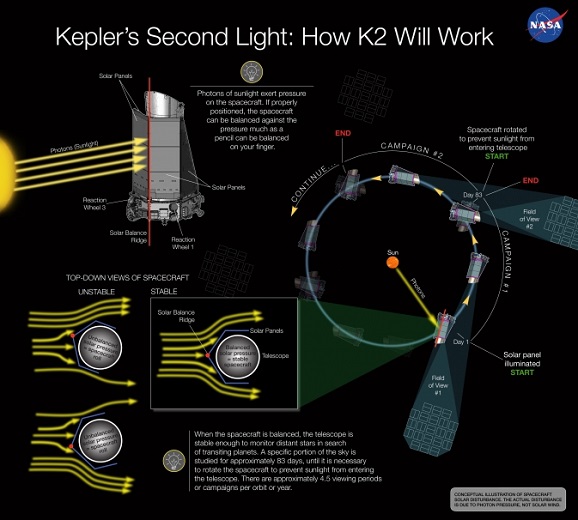Kepler Telescope May Soon Function Once More
This article is more than 2 years old
 While it’s responsible for some of the more amazing exoplanetary discoveries of the last few years, NASA‘s Kepler Telescope has definitely seen its share of woes, having been all but put out to cosmic pasture after two of its gyroscope wheels stopped working, thus making its directional capabilities nonexistent. But many great minds haven’t stopped thinking about ways to utilize the spacecraft, especially since it hasn’t even lasted the projected mission length. Now it’s possible Kepler and Ball Aerospace engineers may have come up with a way to keep Kepler relevant to space exploration, and they don’t even have to fix any wheels.
While it’s responsible for some of the more amazing exoplanetary discoveries of the last few years, NASA‘s Kepler Telescope has definitely seen its share of woes, having been all but put out to cosmic pasture after two of its gyroscope wheels stopped working, thus making its directional capabilities nonexistent. But many great minds haven’t stopped thinking about ways to utilize the spacecraft, especially since it hasn’t even lasted the projected mission length. Now it’s possible Kepler and Ball Aerospace engineers may have come up with a way to keep Kepler relevant to space exploration, and they don’t even have to fix any wheels.
The new plan is called the K2 mission, and proposes using solar pressure as a substitute for a third functioning positioning wheel. It’s the sun’s photon-based bullying that constantly pushes the spacecraft around, which the precision maneuvering worked to fix. If Kepler can be turned so that the pressure hits all of the craft’s solar panels equally, which would require Kepler being almost parallel to its orbital path around the sun, then it’s possible it could retain the kind of stability needed in order to successfully go exoplanet huntin’.
The research team is already testing this process with early results coming in and looking pretty good. For an October test, the telescope was positioned pointed towards Sagittarius and photons were collected over a 30-minute timeframe that produced an image with a quality that very nearly matched that of a fully functioning Kepler, coming within five percent of the best possible result. Since extended time is needed to create these images, many more tests will be performed to ensure exact stability can be continuously reached. Take a look at an illustrated version of the mission below.

The plan was submitted to NASA, who is expected to decide by the end of the year on whether or not to take the mission to the biannual assessment Senior Review next year, and what kind of a budget it would need to get it working.
Even if Kepler was just a floating paperweight, researches still haven’t nearly completed looking through all of the data that it has accumulated over the last four years, including the brightness of over 150,000 stars, all while looking for the possibly habitable planets that orbit them. Kind of like looking for a germ on a needle on a planet of haystacks, but the reward would be more than worth the efforts.
Below you can find a quacky NatGeo look at how Kepler can help us find aliens.












